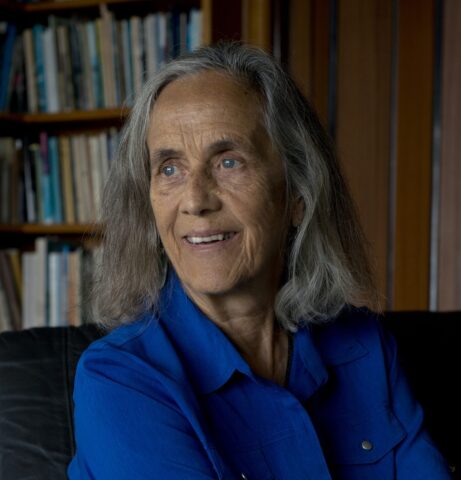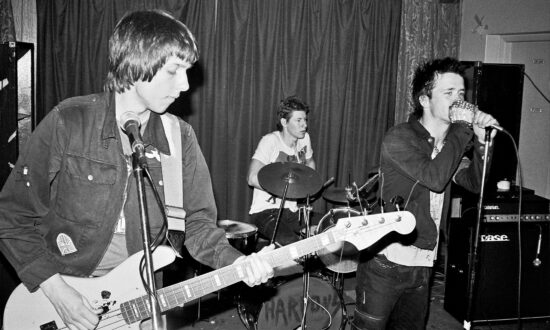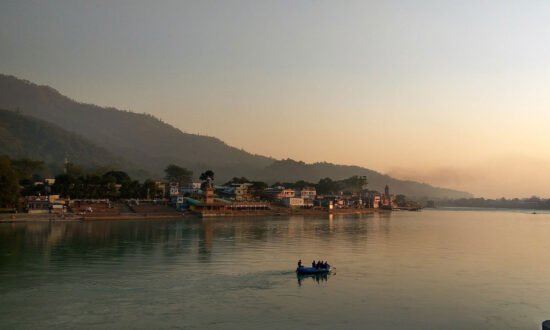The Stories from the South Book Club is a new series for book lovers to explore what it means to inhabit the unique world of the ‘South’.
This month, we’re reading Pōtiki by Patricia Grace. We will meet live at Dymocks Bookstore Rundle Mall on Tuesday November 28, 6.30-7.30pm for a discussion led by Mandy Treagus and Maggie Tonkin.
Use this reading guide and the Take to the Page creative writing prompts to enrich your reading.
ABOUT PŌTIKI

Patricia Grace. Photo: Grant Maiden
First published in 1986, Patricia Grace’s Pōtiki has become a classic of Aotearoa New Zealand literature. Grace generously shares the richness of Māori story and culture with her readers.
When reading Pōtiki, one is immediately struck by the multiple points of view it presents. The story is mostly narrated by three characters at the heart of the community: Roimata, her husband, Hemi, and Toko, a special child. Though the characters are individuated, this form of narration gives readers a sense that the story is being told by the whole family.
While the novel has a dramatic climax, it is almost peripheral to the formation and development of family – whanau – bonds, together with their attempts to build a self-sufficient community. When Pōtiki was re-released in 2020, Grace wrote that the novel’s aim was not political – that was something of a sideline. She was concerned to write about the tight familial and communal bonds that were an integral part of her life.
The titular ‘Pōtiki’ means ‘youngest child’ or ‘last born’ and refers both to the book’s central character, Toko, the prophet child gifted with ‘eversight’, who foresees the coming troubles and violence, and to the great hero Maui. The story ebbs and flows around the wharenui and marae – the carved meeting house, land and burial grounds – at the heart of the community. Traditional carving and storytelling – prized skills passed down through generations – are recurring motifs.
Pōtiki’s timeless quality sits comfortably alongside its enduring real-world relevance. Attempts to forcibly acquire Māori land continue, including by the government which, decades after the book’s publication, tried to seize Grace’s own, in an attempt that was successfully resisted.
ABOUT THE AUTHOR

Grace’s collection, Waiariki, first published in 1975.
Patricia Grace, born in 1937, was the first published Māori writer in Aotearoa New Zealand, opening the way for others to follow, including Keri Hulme, Witi Ihimaera, and Alan Duff. Her anthology of short stories, Waiariki, was published in 1975. She began writing children’s stories while working as a teacher, hoping to depict a world in which Māori children could see their own lives. Grace became a full-time writer in the 1980s, and has written seven novels, seven short story collections, a non-fiction biography and an autobiography.
Grace has twice won the top award for fiction at the New Zealand Book Awards. In 2001, she was longlisted for the Man Booker Prize for Dogside Story, which also won the Kiriyama Pacific Rim Fiction Prize. She has been awarded two honorary doctorates of literature, and has received the Icon Award from the Arts Foundation of New Zealand for extraordinary lifetime achievement. In 2007, Grace was made a Distinguished Companion of the New Zealand Order of Merit (DCNZM) for her services to literature.
QUOTES FROM THE AUTHOR
“Yes, all through my schooling I had never read a book by a New Zealand writer. When I went to teachers college I read the works of Frank Sargeson and for the first time I realised what writing was. I realised that it started from your own personal experience, background and surroundings, whereas before, during my school experience, writing had been the opposite to that. So I read the works of Frank Sargeson and started hearing the New Zealand voice for the first time in literature. And then I read the work of Amelia Batistich; I realised that she had a different New Zealand voice. It reinforced the idea that writers had their own voices. It occurred to me when I read those works that I had a voice as well, and I thought that I would like to try that out.” – ‘An interview with Patricia Grace’, 2003.
“There was one deliberate political act, and that was not to have a glossary for Māori text or to use italics. A glossary and italics were what were used for foreign languages, and I didn’t want Māori to be treated as a foreign language in its own country. When I told my publishers I didn’t want the Māori italicised or glossed, and gave my reasons, they agreed with me.”– ‘Patricia Grace, The Interview’, 2016.
QUESTIONS AND DISCUSSION POINTS
Compare how Pōtiki depicts Māori and Pākehā relationships to the land, water and sea.
Discuss the presence of the sea and shore, and the notion of liminality, throughout Pōtiki. For example: Roimata’s night on the beach and her washing in the sea on the morning before she re-enters the community, Toko’s sea-birth, and the coastal real estate desired by Dollarman.
Discuss Pōtiki’s representations of disability in Pōtiki. How does the book represent disability in individual characters (Mary, Toko, Manu)? And how does it represent their treatment by the community?
Māori language is integral to the story. How did you respond to the lack of the glossary? Did it enhance or diminish your reading experience? Did it pique your interest to find the meanings – often many-layered meanings – of the words in te reo Māori, or did you find it bothersome or alienating?
FURTHER RESOURCES
- In this article, Patricia Grace talks about culture, politics and activism, on the occasion of Pōtiki being republished in the UK in 2020.
- From the Academy of New Zealand Literature (ANZL), Jolisa Gracewood writes about Patricia Grace.
- A 2016 article on Patricia Grace’s writing by Keri Kaa.
- An interview with Patricia Grace, May 2016.
- In ‘On Reading Grace’s Pōtiki‘, Eva Rask Knudsen expands on Māori motifs in Grace’s novel and pays attention to Māori storytelling, myth and notions of textuality. She notes that while the Māori creation story is not explicitly told in the novel, it is there as a structuring subtext, along with other stories.
- In 2017, an act of the Aotearoa New Zealand parliament granted personhood to a river, recognising it as a living being and thereby formally acknowledging the Māori worldview of the Whanganui River as an ancestor.
TAKE TO THE PAGE: CREATIVE WRITING PROMPTS
“Our houses stand close together on this, the papakainga, and they window the neatened curve of sea.” — Pōtiki (page 15)
Note how Grace uses a noun (“window”) as a verb in the excerpt above (this technique is called anthimeria). Choose a few nouns and try using them as a verbs in sentences describing your home and/or community.

Get InReview in your inbox – free each Saturday. Local arts and culture – covered.
Thanks for signing up to the InReview newsletter.
*
“I thought of Manu saying that there were no stories for him, and that there were cracks in the floor and kids that fizzed like bees.”— Pōtiki (page 38)
Consider the extent to which you feel represented (if at all) by ‘our’ stories (cultural, social, political, scientific). What would need to be included in a story for it to be yours? What objects, people, places, ideas would need to be present? Create a list of essentials.
*
“The land and the sea and the shores are a book too, and we found ourselves there. They were our science and our sustenance. And they are our own universe about which there are stories of great deeds and relationships and magic and imaginings, love and terror, heroes, heroines, villains and fools. Enough for a lifetime of telling.” — Pōtiki (page 104)
Using items from your list of essentials, write about your own “universe” in the first person plural (“we”).
MORE STORIES FROM THE SOUTH
If you enjoyed Pōtiki, why not try books by other Māori writers:
- Keri Hulme’s 1985 Booker Prize-winning novel The Bone People set on the South Island of Aotearoa New Zealand.
- Witi Ihimaera’s The Matriarch and also The Whale Rider, adapted into the internationally successful film Whale Rider in 2002.
Other books by Patricia Grace:
- Her 1992 novel Cousins, adapted to film in 2021, exploring the very different lives of three female Māori cousins over several decades.
- Her recent autobiography, From the Centre: a writer’s life, published in 2021.
Support local arts journalism
Your support will help us continue the important work of InReview in publishing free professional journalism that celebrates, interrogates and amplifies arts and culture in South Australia.
Donate Here




